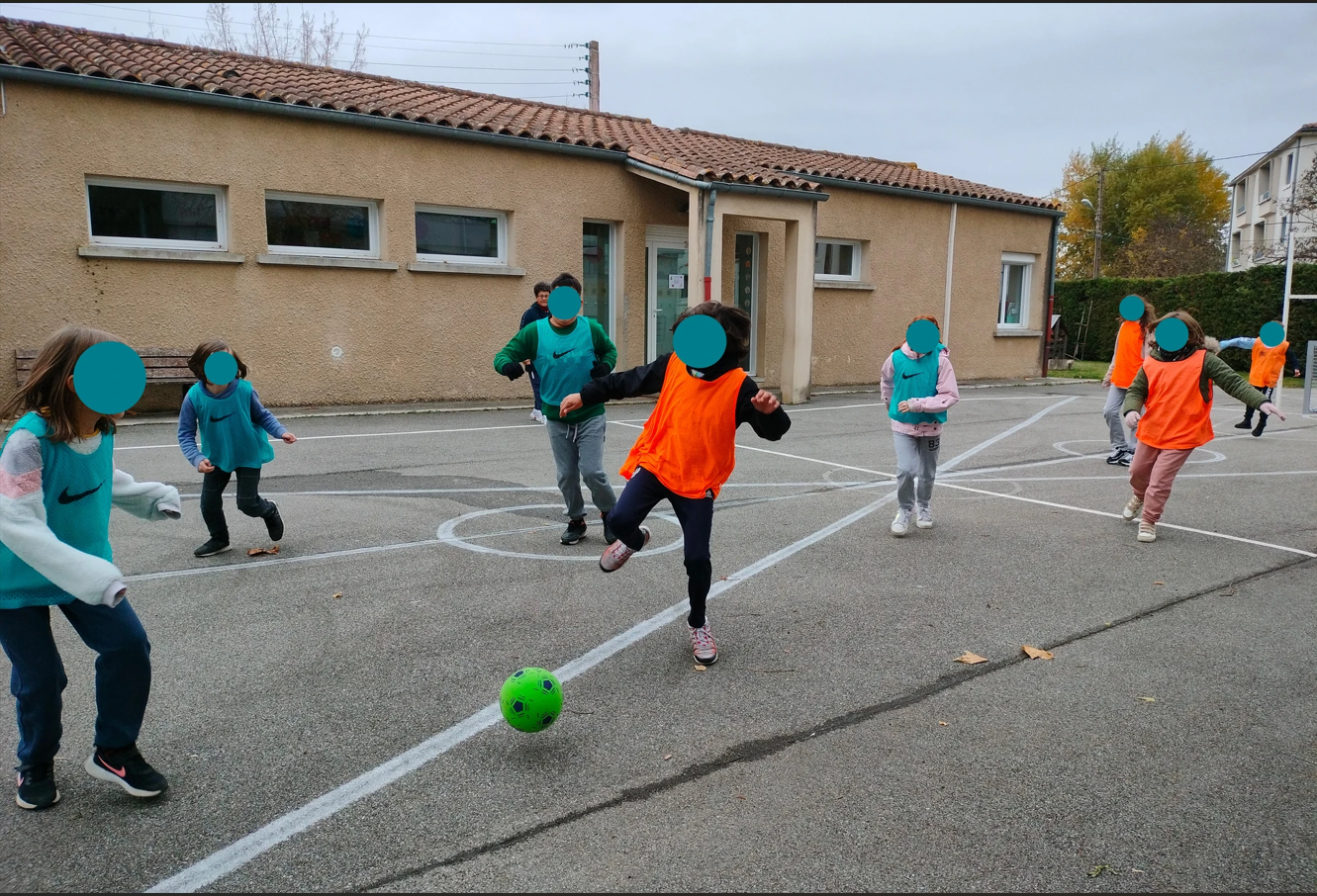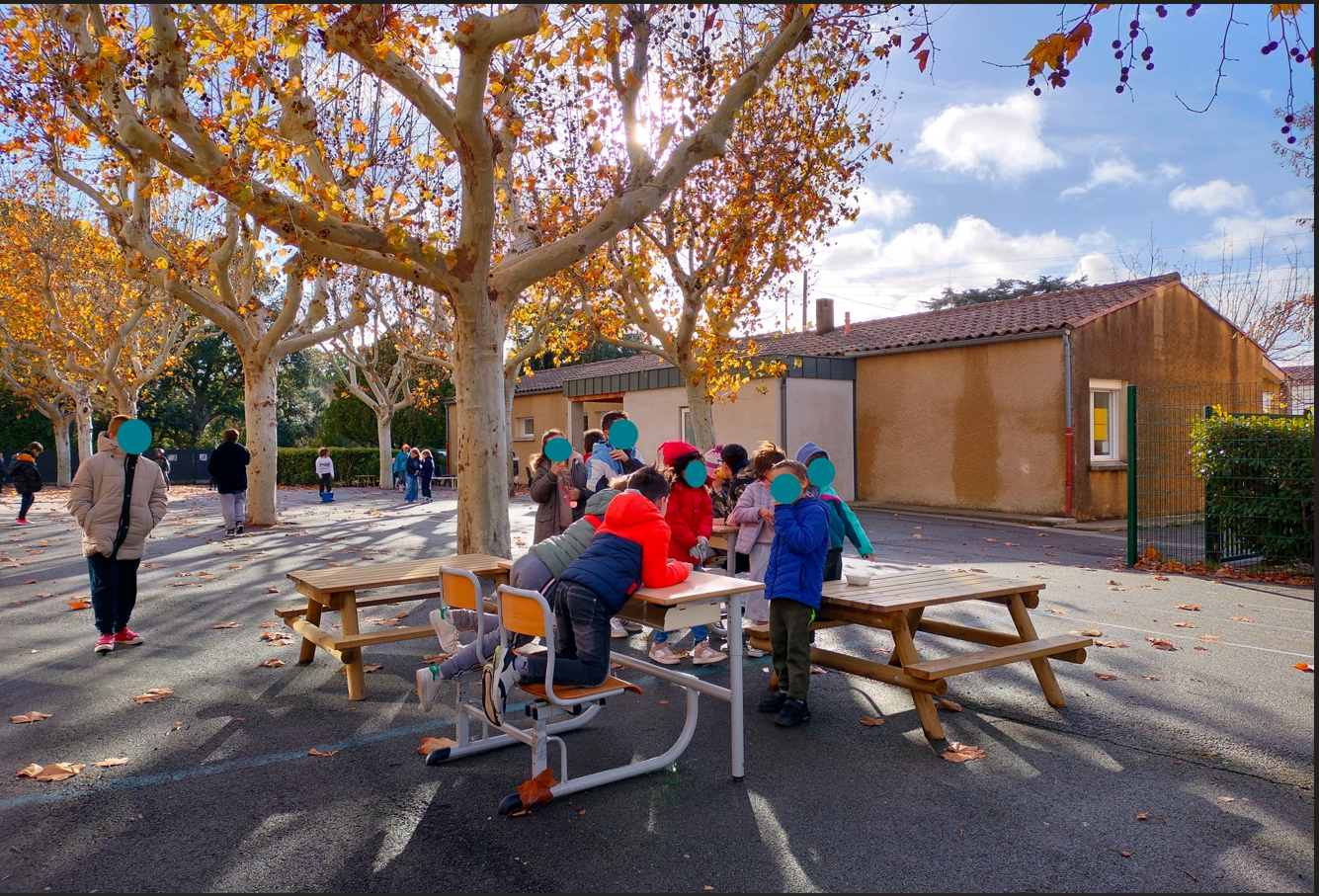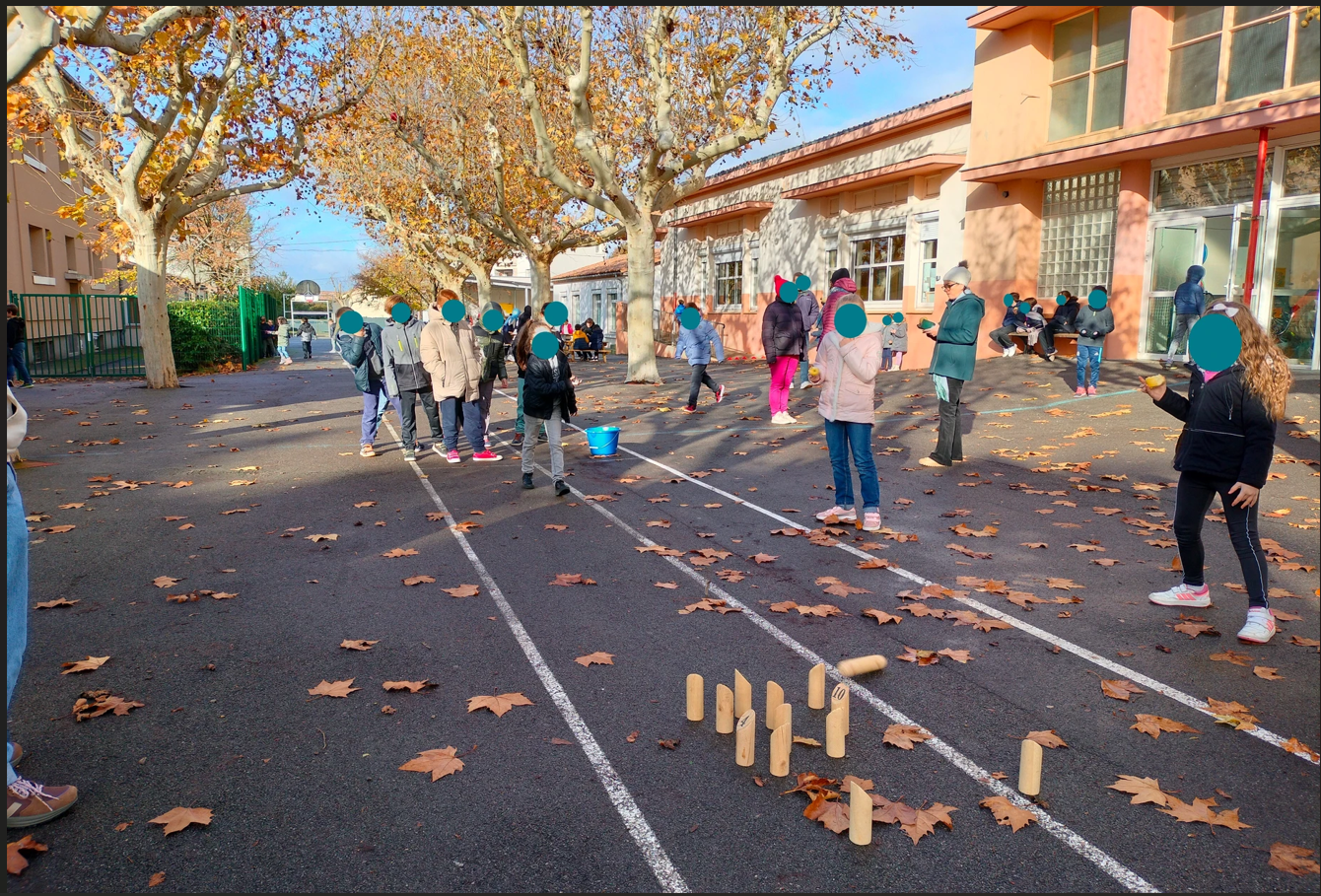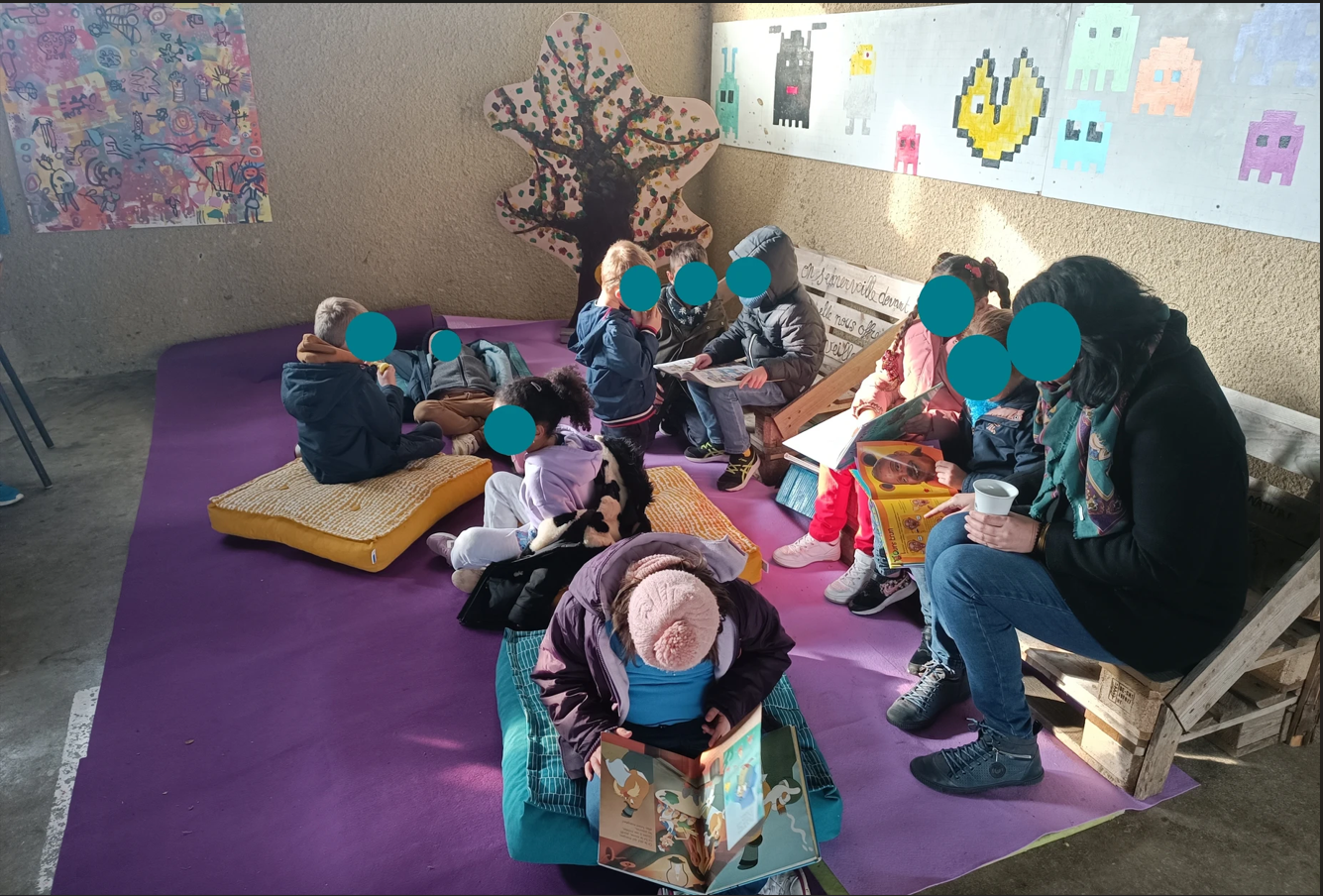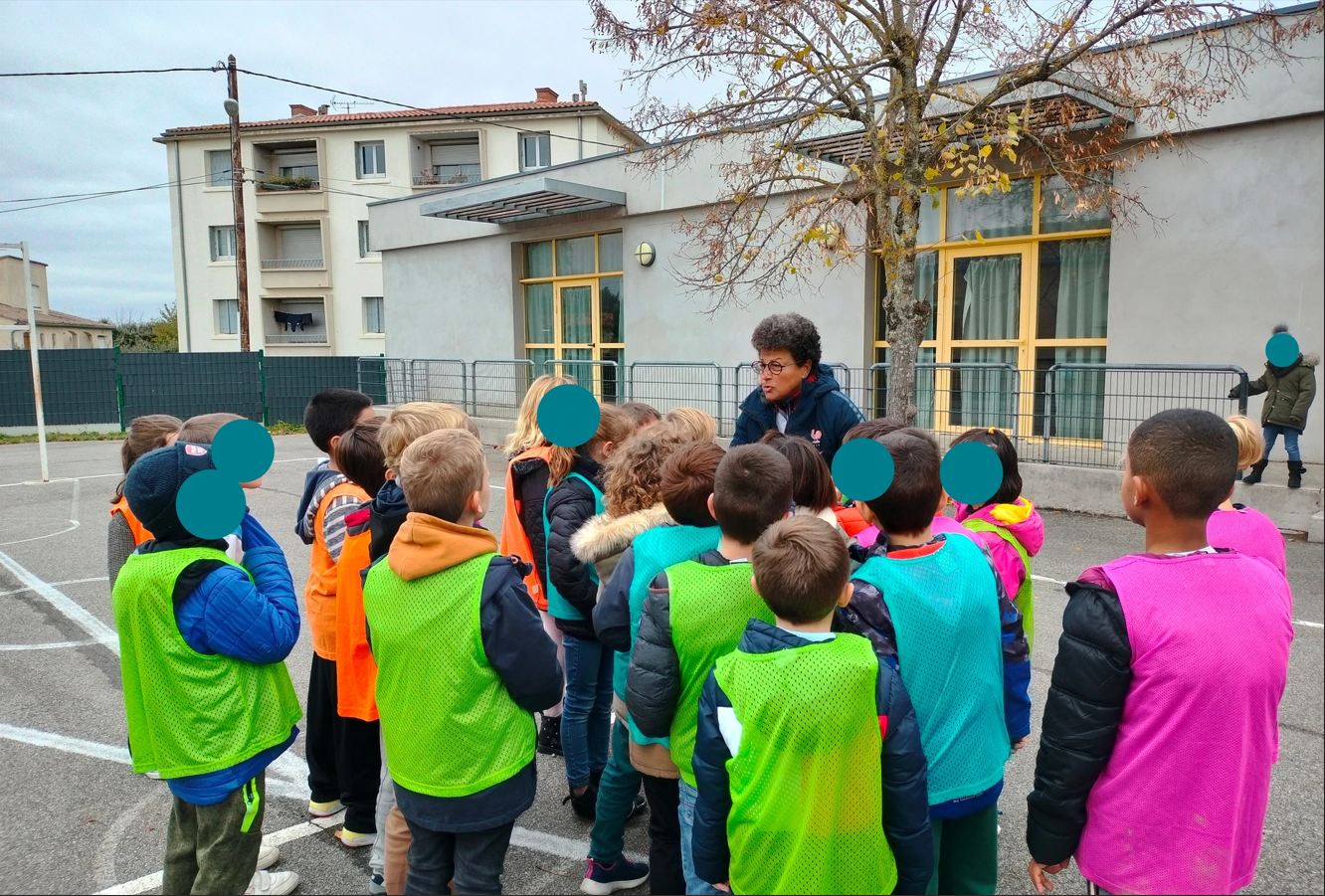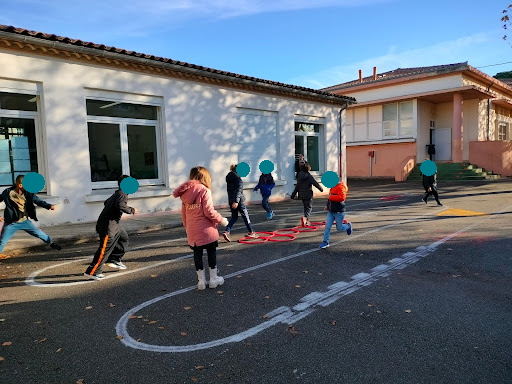Equal treatment
Equal treatment in the school grounds and making the use of sanitary facilities less taboo
Our initiative aims to promote equal use of the school grounds and toilets by all children by removing the taboos that surrond them.
France
Rue du Chanoine Andrieu
Prototype level
Yes
No
Yes
No
No
11049: Bram (FR)
The aim of our initiative is to redesign the school grounds in an egalitarian way, and to promise children healthier use of the sanitary facilities. It affects the children, who are at the heart of the project. But also the teachers, who are with them every day. The cleanning staff, who help the children to use the school grounds and toilets in a more hygienic way. And finally, parents, who need to be aware that their children's needs are important. Finally, thanks to a study carried out in several stages, the children feel more comfortable going to the toilet, and there is a greater mix in the game offered during recess.
Inclusion
Participation
Diversity
Listen to
Creativity
The main objectives of this initiative are to include every child, encourage access for all, listen to children's needs and encourage gendre diversity. For these objectives to be sustainable, it is important to listen to each child's voice, take account of their needs and encourage them to communicate. With regard to the use of sanitary facilities, the children feel freer to talk about it, and a qualitative survey was carried out among parents and activity leaders after the experiments. This initiative is important today, because it helps to make children aware, from an early age, that society is made up of different people, with different needs. It's important for children to feel included.
A participative fresco was created around the taboos of toilets. This fresco and participatory workshop was run by the à nous les toilettes collective. For the school playground, the aesthetic work will be carried out by tracing the lines of the games on the ground and iron-on games.
The fresco was created through a participatory process involving the children, a street artist, Mister Pee, the teachers and the youth workers.
The fresco was created through a participatory process involving the children, a street artist, Mister Pee, the teachers and the youth workers.
This initiative is fully in line with an inclusive approach. Its aim is to promote equal access to school facilities.
Thanks to a number of workshops, the children were able to work and talk together in a fun way, and experiment with mixed games, where both boys and girls had their place.
Access to the toilets can be an obstacle for some children (harassment), so they worked on respecting others. The children totally respected this work.
Thanks to a number of workshops, the children were able to work and talk together in a fun way, and experiment with mixed games, where both boys and girls had their place.
Access to the toilets can be an obstacle for some children (harassment), so they worked on respecting others. The children totally respected this work.
The people affected by this initiative were first and foremost the children, because the initiative is based around them. Then the teachers, because they are the first to be involved with the children at school. And the activity leaders, because it's thanks to them that the children learn to play and interact with each other.
Thanks to this initiative, the involvement of each party is essential to give the initiative a certain importance in the eyes of the children, so that they feel taken seriously and listened to. The children got involved in the workshops on offer.
Thanks to this initiative, the involvement of each party is essential to give the initiative a certain importance in the eyes of the children, so that they feel taken seriously and listened to. The children got involved in the workshops on offer.
Several parties were involved in setting up this initiative. Firstly, we have the ARObE (atelier de recherche et d'observation égalité) consultancy, which guided and led this initiative as well as all the workshops set up. Then there's the ‘A nous les toilettes’ collective, which includes the Léo Lagrange ‘Les petits citoyens’ foundation, who also took part in several workshops.
As already explained, the ‘internal’ part of the school, the teachers, the activity leaders and the cleaning staff, played a role in guiding and supporting the children.
Finally, the parents had the role of ‘examiner’, knowing how the children behaved outside the school after the workshops. The parents were able to help evaluate the initiative.
As already explained, the ‘internal’ part of the school, the teachers, the activity leaders and the cleaning staff, played a role in guiding and supporting the children.
Finally, the parents had the role of ‘examiner’, knowing how the children behaved outside the school after the workshops. The parents were able to help evaluate the initiative.
Our project uses an experimental approach with the children to rethink the layout of the playground in terms of how the space is actually used, and to encourage more balanced sharing. The social sciences and education have been used to analyse the dynamics of gender and inclusion in interactions, while the sociology of space has guided the design of an environment that encourages mixed and egalitarian appropriation of the space. This participatory approach, combining observation, experimentation and adjustments, reinforced the relevance of and support for the project, guaranteeing a lasting impact on the use of the courtyard and toilets.
Our initiative stands out for its innovative approach aimed at achieving real equality in the use of school spaces, going beyond traditional layouts that often favour certain activities to the detriment of others. Unlike traditional designs, where spaces are mainly monopolised by dominant uses (such as football in the centre of the playground), our project is based on unprecedented experimentation with children to observe and rebalance the occupation of the space. By incorporating shared and flexible zones, we are promoting mixed and inclusive access, ensuring that girls and boys, as well as children with a variety of preferences, can make the space their own in an equitable way.
Our project is based on an experimental and participatory approach designed to encourage equal use of school areas, particularly the playground and toilets. There are two main strands to the project: observation and analysis of the ways in which girls and boys occupy these spaces, as well as the ways in which different forms of disability are used, and raising awareness of the issues of equality and co-education among the educational community, pupils and parents.
Conducted by ARObE over a week in 2023 with the participation of Nicole Abar, a former footballer and founder of the association Liberté aux joueuses, the project was divided into four phases. Firstly, educational discussions and drawings enabled the children to express their perceptions of the playground and the inequalities in its use. Immersive visits then took these observations further, identifying problem areas. An experimentation phase then tested new arrangements for more mixed access, limiting the predominance of ball games and favouring diversified spaces. Finally, the test phase assessed the impact of the changes by introducing three zones: dynamic, calm and intermediate. A detailed report was submitted to the municipality, and the school obtained €23,000 in funding from the Conseil National de la Refondation to implement these improvements. At the same time, work was carried out on the sanitary facilities with educational and artistic workshops involving 156 pupils, with the aim of removing taboos and transforming these spaces into more inclusive and aesthetically pleasing places, in collaboration with Harpic, Essity and Les Petits Citoyens. The whole project fully embodies the values of the New European Bauhaus, combining sustainability, inclusion and aesthetics, while placing children at the heart of the process of transforming their environment.
Conducted by ARObE over a week in 2023 with the participation of Nicole Abar, a former footballer and founder of the association Liberté aux joueuses, the project was divided into four phases. Firstly, educational discussions and drawings enabled the children to express their perceptions of the playground and the inequalities in its use. Immersive visits then took these observations further, identifying problem areas. An experimentation phase then tested new arrangements for more mixed access, limiting the predominance of ball games and favouring diversified spaces. Finally, the test phase assessed the impact of the changes by introducing three zones: dynamic, calm and intermediate. A detailed report was submitted to the municipality, and the school obtained €23,000 in funding from the Conseil National de la Refondation to implement these improvements. At the same time, work was carried out on the sanitary facilities with educational and artistic workshops involving 156 pupils, with the aim of removing taboos and transforming these spaces into more inclusive and aesthetically pleasing places, in collaboration with Harpic, Essity and Les Petits Citoyens. The whole project fully embodies the values of the New European Bauhaus, combining sustainability, inclusion and aesthetics, while placing children at the heart of the process of transforming their environment.
The initiative could be reused in schools that want to see a greater gender mix and equal access for all children.
The initiative is available to all French local authorities who want it, thanks to the ‘A nous les toilettes’ collective.
The initiative is available to all French local authorities who want it, thanks to the ‘A nous les toilettes’ collective.
The initiative addresses an increasingly important challenge, one that is becoming a necessity: equality. We must all be equal, and have the same equal access.
The project to redesign the school playground and embellish the school toilets is based on a participative and experimental approach, directly involving the children in the reflection and transformation of their environment.
For the playground, several stages were set up: discussion and drawing workshops enabled the pupils to express their feelings and expectations. These discussions highlighted the imbalances in the use of space, often monopolised by dynamic games played mainly by boys. Immersive visits were then organised to collectively observe the most and least frequented areas, as well as the inequalities in access.
Experimentation played a key role: different configurations were tested to better distribute the space. Rather than a single central ball court, several complementary areas were set up to diversify play. The children's reactions guided the gradual adjustment of these layouts.
At the same time, specific work was carried out on toilets through educational and artistic workshops involving 156 pupils from CP to CM2. These sessions explored the concepts of intimacy, hygiene and well-being, with a view to removing taboos surrounding their use. Working with street art artist Mister Pee, the children took part in the aesthetic transformation of the premises to make them more welcoming and inclusive.
This project embodies the values of the New European Bauhaus, combining inclusion, sustainability and aesthetics. It places children at the heart of the process of reclaiming school spaces, fostering a more egalitarian and harmonious environment, designed for and with its main users.
For the playground, several stages were set up: discussion and drawing workshops enabled the pupils to express their feelings and expectations. These discussions highlighted the imbalances in the use of space, often monopolised by dynamic games played mainly by boys. Immersive visits were then organised to collectively observe the most and least frequented areas, as well as the inequalities in access.
Experimentation played a key role: different configurations were tested to better distribute the space. Rather than a single central ball court, several complementary areas were set up to diversify play. The children's reactions guided the gradual adjustment of these layouts.
At the same time, specific work was carried out on toilets through educational and artistic workshops involving 156 pupils from CP to CM2. These sessions explored the concepts of intimacy, hygiene and well-being, with a view to removing taboos surrounding their use. Working with street art artist Mister Pee, the children took part in the aesthetic transformation of the premises to make them more welcoming and inclusive.
This project embodies the values of the New European Bauhaus, combining inclusion, sustainability and aesthetics. It places children at the heart of the process of reclaiming school spaces, fostering a more egalitarian and harmonious environment, designed for and with its main users.

